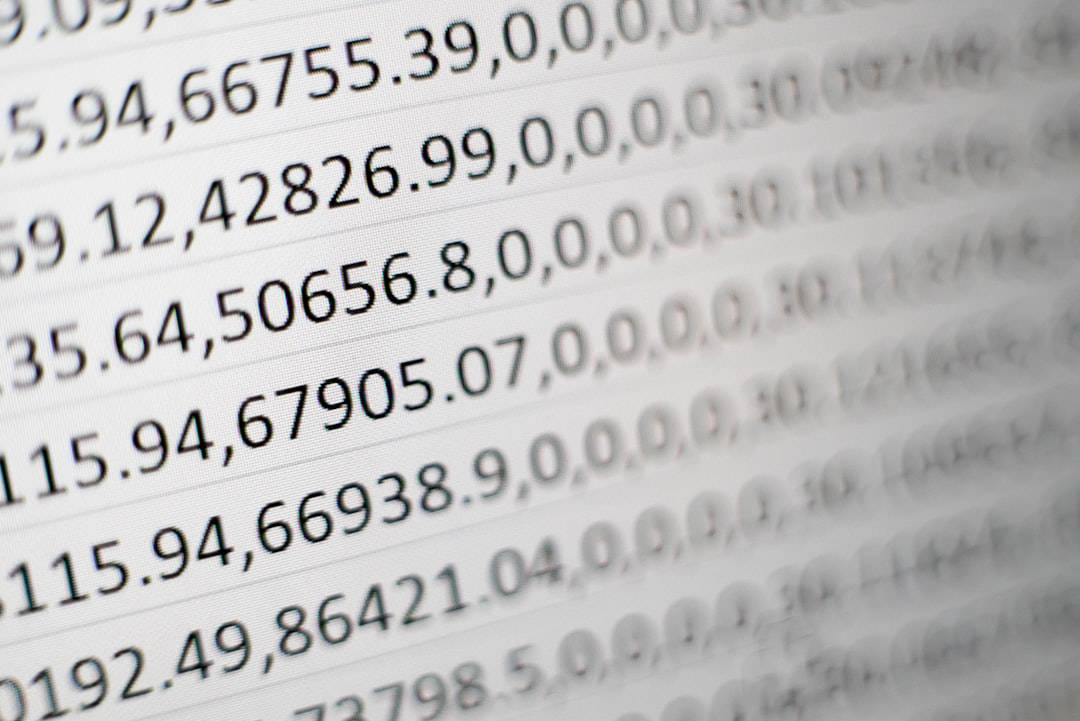The Metaverse is a concept describing a shared virtual space that combines elements of physical and digital reality. It represents a convergence of technologies, including virtual reality (VR), augmented reality (AR), and mixed reality (MR), to create a persistent digital universe parallel to the physical world. Users can interact with computer-generated environments and other participants within this digital realm.
The term “Metaverse” gained prominence through science fiction literature, notably Neal Stephenson’s 1992 novel “Snow Crash” and Ernest Cline’s 2011 work “Ready Player One.” As technology advances, the idea of the Metaverse is transitioning from fiction to potential reality. The Metaverse is not confined to a single platform or technology but encompasses a broad spectrum of virtual experiences. It aims to provide a space for work, recreation, socialization, and creativity within a digital environment.
Unlike traditional games or simulations, the Metaverse aspires to be a fully immersive and interactive digital world with the potential to significantly impact various aspects of human life and interaction. In recent years, the concept has attracted considerable attention, particularly with advancements in virtual reality technology and the growing popularity of online gaming and social media platforms. Major technology companies, including Meta (formerly Facebook), Microsoft, and Google, have expressed interest in developing their own versions of the Metaverse.
This interest signals a growing trend towards creating a unified digital space that transcends conventional boundaries. As technology continues to evolve, the potential applications and implications of the Metaverse for society remain subjects of ongoing exploration and development.
Key Takeaways
- The Metaverse is a virtual reality space where users can interact with a computer-generated environment and other users.
- The concept of the Metaverse dates back to the 1992 science fiction novel “Snow Crash” by Neal Stephenson.
- Accessing the Metaverse requires virtual reality headsets, augmented reality glasses, or other digital devices.
- Navigating the Metaverse requires understanding virtual environments, social interactions, and digital economies.
- The future of the Metaverse holds potential for immersive experiences, virtual economies, and new forms of social interaction, but also raises ethical considerations regarding privacy, security, and digital addiction.
The History of the Metaverse
The concept of the Metaverse can be traced back to science fiction literature and early virtual reality experiments. In Neal Stephenson’s 1992 novel “Snow Crash,” he introduced the idea of a virtual reality-based successor to the internet, where users could interact with each other in a three-dimensional space. This vision of the Metaverse inspired many technologists and entrepreneurs to explore the possibilities of creating a digital universe that transcends the limitations of the physical world.
In the early 2000s, virtual worlds like Second Life and World of Warcraft gained popularity, providing users with immersive online experiences that allowed them to socialize, explore, and create within a digital environment. These early virtual worlds laid the groundwork for the development of the Metaverse, demonstrating the potential for creating expansive digital spaces that could be accessed by millions of users from around the world. In recent years, advancements in virtual reality technology have brought the concept of the Metaverse closer to reality.
Companies like Oculus (owned by Meta) and HTC have developed VR headsets that provide users with immersive experiences, allowing them to interact with digital environments and other users in a more realistic and engaging way. The rise of blockchain technology has also played a significant role in shaping the future of the Metaverse, with the concept of non-fungible tokens (NFTs) enabling users to own and trade digital assets within virtual worlds. As technology continues to evolve, the Metaverse is poised to become an integral part of our digital lives, offering new opportunities for social interaction, entertainment, and commerce.
How to Access the Metaverse

Accessing the Metaverse can be done through various means, depending on the type of virtual experience you are looking for. One of the most common ways to access the Metaverse is through virtual reality (VR) headsets, which provide users with an immersive and interactive experience in a computer-generated environment. VR headsets like the Oculus Rift, HTC Vive, and PlayStation VR allow users to explore virtual worlds, play games, and interact with other users in a three-dimensional space.
Another way to access the Metaverse is through augmented reality (AR) applications, which overlay digital content onto the physical world. AR experiences can be accessed through mobile devices or AR glasses, allowing users to interact with virtual objects and information in real-world environments. Popular AR applications like Pokémon Go and Snapchat have demonstrated the potential for creating interactive experiences that blend the physical and digital worlds.
In addition to VR and AR, mixed reality (MR) technology offers another way to access the Metaverse. MR headsets like Microsoft’s HoloLens combine elements of both VR and AR, allowing users to interact with digital content while still being aware of their physical surroundings. MR technology has applications in gaming, education, and enterprise, providing users with new ways to engage with digital content in real-world environments.
As technology continues to advance, accessing the Metaverse will become more seamless and intuitive, with new devices and platforms offering increasingly immersive and interactive experiences. Whether through VR, AR, MR, or other emerging technologies, the Metaverse has the potential to transform the way we interact with digital content and each other.
| Topic | Metrics |
|---|---|
| Virtual Reality | Usage, Adoption Rate |
| Augmented Reality | Applications, User Engagement |
| Metaverse Platforms | Features, User Base |
| Virtual Goods | Sales, Market Trends |
| Security and Privacy | Concerns, Solutions |
Navigating the Metaverse can be an exciting but overwhelming experience, especially for those who are new to virtual environments. Here are some tips and tricks for navigating the Metaverse and making the most of your digital adventures: 1. Familiarize yourself with the controls: Whether you are using a VR headset, AR glasses, or a mobile device, take some time to familiarize yourself with the controls and interface of your chosen platform.
Understanding how to move, interact with objects, and communicate with other users will help you navigate virtual environments more effectively. 2. Explore different virtual worlds: The Metaverse is home to a wide variety of virtual worlds and experiences, ranging from social hubs and gaming environments to educational simulations and creative platforms.
Take the time to explore different virtual worlds and find experiences that align with your interests and goals. 3. Connect with other users: One of the most compelling aspects of the Metaverse is the ability to connect with other users from around the world.
Whether through voice chat, text messaging, or virtual gestures, interacting with other users can enhance your virtual experiences and create new opportunities for collaboration and socialization. 4. Protect your privacy and security: As with any online environment, it’s important to be mindful of your privacy and security when navigating the Metaverse.
Be cautious about sharing personal information and interacting with unfamiliar users, and familiarize yourself with the privacy settings and security features of your chosen platform. 5. Embrace creativity and experimentation: The Metaverse offers endless opportunities for creativity and experimentation, allowing users to create art, music, games, and other digital content within virtual environments.
Don’t be afraid to experiment with new tools and technologies, and embrace the freedom to express yourself in new and exciting ways. By following these tips and tricks, you can navigate the Metaverse with confidence and make the most of your virtual experiences. Whether you are exploring new worlds, connecting with other users, or creating digital content, the Metaverse offers endless possibilities for adventure and discovery.
The Future of the Metaverse
The future of the Metaverse holds immense potential for transforming how we live, work, and interact in digital environments. As technology continues to advance, we can expect to see several key developments that will shape the future of the Metaverse: 1. Enhanced immersive experiences: As VR, AR, and MR technology continue to evolve, we can expect to see increasingly immersive and realistic experiences within the Metaverse.
From lifelike simulations to interactive storytelling experiences, advancements in technology will enable users to engage with digital content in new and exciting ways. 2. Expanded social interactions: The Metaverse has the potential to revolutionize how we connect with others online, offering new opportunities for social interaction and collaboration.
Virtual events, shared experiences, and collaborative projects will become more common within digital environments, blurring the lines between physical and virtual social interactions. 3. Integration with real-world activities: As AR technology becomes more prevalent, we can expect to see greater integration between virtual experiences and real-world activities.
From interactive museum exhibits to location-based gaming experiences, the boundaries between physical and digital environments will continue to blur as the Metaverse becomes more integrated into our daily lives. 4. New opportunities for commerce: The Metaverse has the potential to create new opportunities for commerce and entrepreneurship, allowing users to buy, sell, and trade digital assets within virtual environments.
From virtual real estate to digital collectibles, blockchain technology will enable new forms of economic activity within the Metaverse. 5. Ethical considerations: As the Metaverse continues to expand, there will be important ethical considerations to address regarding privacy, security, accessibility, and digital rights.
It will be crucial for developers, policymakers, and users to work together to ensure that the Metaverse remains an inclusive and ethical space for all participants. Overall, the future of the Metaverse holds great promise for creating new opportunities for social interaction, creativity, commerce, and entertainment within digital environments. As technology continues to advance, we can expect to see an increasingly interconnected digital universe that transcends traditional boundaries and offers new possibilities for how we engage with digital content.
The Impact of the Metaverse on Society

The impact of the Metaverse on society is likely to be profound, influencing how we live, work, communicate, and interact in both physical and digital environments. Here are some key ways in which the Metaverse may impact society: 1. New forms of social interaction: The Metaverse has the potential to create new forms of social interaction that transcend traditional boundaries of time and space.
Virtual events, shared experiences, and collaborative projects will enable people from around the world to connect in ways that were previously impossible. 2. Changes in work and education: The Metaverse has implications for how we work and learn in digital environments.
From virtual meetings and remote collaboration to immersive educational experiences, the Metaverse may transform how we engage in professional and educational activities. 3. Economic opportunities: The Metaverse has implications for commerce and entrepreneurship as new forms of economic activity emerge within virtual environments.
From virtual real estate to digital collectibles, blockchain technology will enable new opportunities for buying, selling, and trading within the Metaverse. 4. Ethical considerations: As the Metaverse becomes more integrated into our daily lives, there will be important ethical considerations regarding privacy, security, accessibility, and digital rights that need to be addressed.
It will be crucial for developers, policymakers, and users to work together to ensure that the Metaverse remains an inclusive and ethical space for all participants. 5. Cultural impact: The Metaverse has implications for how we create and consume culture within digital environments.
From virtual art galleries and music venues to interactive storytelling experiences, the boundaries between physical and digital cultural experiences will continue to blur as the Metaverse becomes more integrated into our daily lives. Overall, the impact of the Metaverse on society is likely to be far-reaching as it influences how we live, work, communicate, create culture, engage in commerce, and address ethical considerations within digital environments.
Ethical Considerations in the Metaverse
As the concept of the Metaverse becomes more prevalent in our society, it is important to consider ethical considerations that arise from its development and use. Some key ethical considerations include: 1. Privacy: The collection and use of personal data within virtual environments raise important privacy concerns that need to be addressed by developers and policymakers.
Users should have control over their personal information within virtual spaces. 2. Security: Ensuring that virtual environments are secure from cyber threats is crucial for protecting users from potential harm or exploitation within digital spaces.
3. Accessibility: It is important that virtual environments are accessible to all individuals regardless of their physical abilities or technological resources. 4.
Digital rights: Users should have clear rights regarding ownership of digital assets within virtual environments as well as protections against exploitation or abuse. 5. Inclusivity: Developers should strive to create virtual environments that are inclusive of diverse populations in terms of race, gender identity, sexual orientation, age, disability status, etc.
Addressing these ethical considerations will be crucial for ensuring that the development and use of the Metaverse align with principles of fairness, justice, privacy protection, security measures as well as inclusivity for all individuals who engage within these digital spaces. In conclusion,the concept of the Metaverse represents an exciting frontier in technology that has far-reaching implications for how we live our lives in both physical and digital spaces.The history,the future,the impact on society as well as ethical considerations all play a crucial role in shaping this emerging concept into something that can benefit humanity as a whole if approached thoughtfully,responsibly,and ethically
If you’re interested in learning more about the economic and social impacts of the metaverse, be sure to check out the article “Metaverse and the Real World: Economic and Social Impacts” on Metaversum.it. This article provides a comprehensive overview of how the metaverse is shaping our real-world economy and society. It’s a must-read for anyone looking to understand the broader implications of this emerging technology. (source)
FAQs
What is the metaverse?
The metaverse is a collective virtual shared space, created by the convergence of virtually enhanced physical reality and physically persistent virtual reality. It is a concept that has gained popularity in recent years due to advancements in technology and the increasing integration of virtual and augmented reality experiences.
What is the difference between the metaverse and virtual reality?
Virtual reality (VR) is a simulated experience that can be similar to or completely different from the real world. It immerses the user in an environment that simulates a physical presence in places in the real world or imagined worlds. The metaverse, on the other hand, is a collective virtual shared space that encompasses multiple virtual and augmented reality experiences, creating a seamless and interconnected digital universe.
How is the metaverse being used?
The metaverse is being used for a wide range of applications, including social interactions, gaming, education, virtual events, virtual commerce, and more. Companies are also exploring the potential of the metaverse for virtual workplaces, collaborative design, and immersive storytelling experiences.
What are some examples of companies involved in the development of the metaverse?
Several tech companies, including Facebook (now Meta), Microsoft, Epic Games, and Roblox, are heavily invested in the development of the metaverse. These companies are creating platforms, tools, and experiences that contribute to the growth and expansion of the metaverse.
What are the potential benefits of the metaverse?
The metaverse has the potential to revolutionize how we interact with digital content and each other. It could enable new forms of communication, collaboration, and creativity, as well as open up new opportunities for entertainment, commerce, and education. Additionally, the metaverse could provide a platform for addressing social and environmental challenges through immersive experiences and simulations.











Leave a Reply